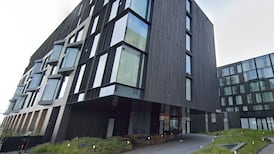A Cement Roadstone-owned brick factory is the "probable" cause of pollution on a Kilkenny farm afflicted by stunted cattle, dead trees and low milk yields, the European Parliament has charged.
MEPs investigated a petition from Castlecomer farmer, Dan Brennan, over the last six months into his charges that his 170-acre holding has been affected by emissions from the nearby Ormonde brick factory.
The company has always said that it operated under licence and inspection by the Environmental Protection Agency.
"It is a matter which deserves to be taken much more seriously than it has been by the Irish authorities until now," complained the authors of the MEPs' report, Marcin Libicki and Radu Podgorean. Sharply criticising State authorities, it said the Department of Agriculture and Food had failed to investigate thoroughly, while the Office of Environmental Enforcement had not provided information when asked.
Mr Brennan's herd has mysteriously lost weight, or failed to grow, milk yields from the cows is significantly down while dozens of calves have died, as have over 100 trees since 1990.
"There exists enough tangible evidence available, linked to our own on-the-spot assessment of the environment and the cattle concerned, to indicate a probable or likely causal effect between the emissions from the CRH brick factory and the affected cattle. Indeed since July a further 'downturn in thrive' was observed subsequent to the above event," said the MEPs, who produced the report on behalf of the European Parliament's Petitions Committee.
"If there is proof of a violation of EU law related to air pollution and contamination then the European Commission has the power to act and take the matter before the Court of Justice, but this would be an affair against the Irish state and not directly against individuals or companies. Judging by the visible environmental damage mentioned above there would definitely appear to be a prima facie case to be answered," they went on.
Topological and geographical conditions explain why only Mr Brennan's farm has been affected by the problem and not other farms in the area.
"It is quite evident that the cattle grazing areas are situated on the hillside farm in a sort of hollow, at the bottom of which lies the brick factory whose chimney - a rather small chimney - can be easily identified," said the report.
"It is not only the cattle which have been affected as the delegation was able to clearly see the impact of toxicity on the foliage and trees in the hedgerows where shrivelled branches and dead leaves areas were quite visible, next to areas of healthy plant growth," it went on.
An investigation of the hedgerows would have shown where "the real damage has occurred and is most visible. Ecological damage is thus clearly defined, visible and very restricted".
The Office of Environmental Enforcement based in Wexford, which has responsibility for carrying out assessments, "has not proved to be very forthcoming when asked to provide information".











